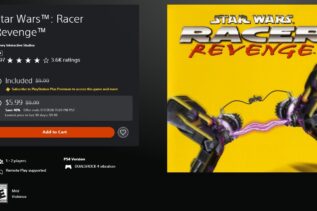As Red Bull moves toward a future without its legendary designer, the RB17 hypercar stands as the ultimate expression of Adrian Newey’s aerodynamic philosophy. The project represents a bridge between Formula 1 engineering and consumer track performance.
Joined30/03/2015
Articles12349
Despite the arrival of Adrian Newey and Honda power, Fernando Alonso has questioned whether Aston Martin can integrate its new staff and facilities quickly enough to win immediately in 2026.
Clicks Technology has unveiled the Clicks Communicator at CES 2026. This standalone smartphone is designed as a companion device that prioritizes messaging and focus over the infinite feeds of modern flagship phones.
Physical copies of a specific Star Wars game have seen a 1,900 percent price increase on eBay. This sudden jump is due to the game’s discovery as a necessary tool for the latest PlayStation 5 jailbreak.
GoveeLife has launched the Smart Nugget Ice Maker Pro at CES 2026, utilizing a patented AI NoiseGuard technology to resolve the mechanical disruptions and high maintenance common in residential pellet ice machines.
Red Bull Racing has unveiled a revised logo design for the 2026 Formula 1 season, restoring the white outline around the team's red lettering for the first time since 2015. The modification has generated speculation regarding potential livery changes ahead of the January 15 season launch event in Detroit, where Red Bull and Racing Bulls will reveal their 2026 designs alongside Ford during the debut of Red Bull Ford Powertrains.
HoYoverse has announced Genshin Impact Version Luna IV, launching January 14, 2026, with two new five-star characters: Columbina, a Hydro Catalyst user specializing in Lunar Reactions, and Zibai, a Geo Sword wielder. The update concludes the Nod-Krai Archon Quest storyline with a confrontation against Il Dottore and brings back the annual Lantern Rite festival with rewards exceeding 1,600 Primogems.
Italian designer Luca Serafini has released renderings of a modern Ferrari Testarossa concept that draws more directly from the 1984 Pininfarina design than Ferrari's official 849 Testarossa revealed in September 2025. The independent project, created in collaboration with 3D modeler Aldo Russo, showcases an alternative vision that emphasizes visual continuity with the original model's distinctive side strakes and wedge profile.












